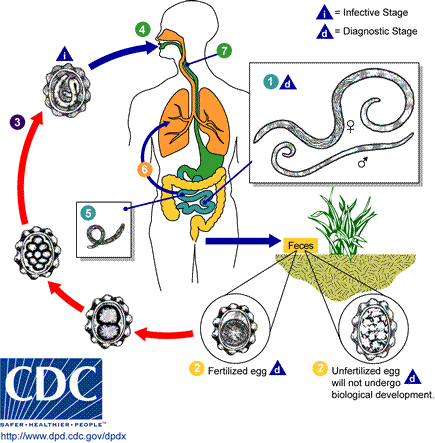Immunization in the ABO system may be produced by heteroimmunization (through substances of animal origin or from bacterial origin), or by aloimmunization (pregnancy or transfusions).
Immuneantibodies have many properties, among which we may mention the following: 1) They are generally IgG; 2) They are haemolytic; 3) Their highest degree of activity is reached at 37 'C; 4) They may disappear a few weeks or months after immunization.
With respect to probable associations between blood groups and the presence of parasites, information is contradictory12'4,7. HUNTLEY et al.5 have associated the presence of immune antibodies in the ABO system in children with infection caused by helminths in their mother. We would like to comment on our experience in detecting the presence of immune antibodies of ABO system in children who were infected by Ascaris lumbricoides. Since immune antibodies tend to disappear as the antigenic stimulus decreases, the quantitative determination of this kind of antibodies would allow the evaluation of the treatment efficacy.
Four patients with ABO haemolytic antibodies were selected. Their sera were used within 12 hours after extraction. Sera were titrated at different temperatures (37 'C, 20 deg C and V Q, following the conventional methodology'.
SP is a useful value to compare quantitatively the capability of two or more techniques to detect differences between agglutinations.
Results of the experience are shown on Table 1:
Apparently our results support the association Ascaris lumbricoides infection with the ABO hemolytic disease. The proposed technique is easy to carry out and may be useful in the prognosis and-ontrol of this illness.
REFERENCES
1. AYRES, M.; SALZANO, F.M.; HELENA, M.; FRANCO, LP. & DE SOUZA BARROS, R.M. - The association of blood groups ABH secretion, haptoglobins and hemoglobins with filariasis. Hum. Hered., 26:105-109, 1976.
2. CARME, B.; MAMBOUENI, LP; COPIN, N. & NOIREAU, F. - Clinical and biological study of Loa loa filariasis in Congolese. Amer. J. trop. Med. Hyg., 41: 331-337, 1989. 3. GOUDEMAND, M. & MARSALET, LD. - Elements d'immuno-hematologie. Paris, Flammarion, 1967.
4. GYORKOS, T.W.; SUKUL, N.C. & DASDAL, A. - Filariasis and ABO blood group status: a critical appraisal. Trees, roy. Soc. trop. Med. Hyg., 77: 564-565, 1983.
5. HUNTLEY, C.C.; LYERLY, A.D.; LITTLEJOHN, M.P.; RODRIGUEZ TRIAS, H. & BOWERS JR., G.W. - ABO hemolytic disease in Puerto Rico and North Carolina. Pediatrics, 57: 875883, 1976.
6. MARCEL.LI, A.; FIN LM.; HOMBE, JLC. & RIBAT, L -en Im-totem. P degis, Flammarion, 1991.
7. MORALES, G.A.; PINO, L.A. & CHOURIO LOZANO. G. - FxoepWetWolofs de Ascaris honbos en mm zone endia y su mladin con Im gnqm gangufiwm Act&gi-oA deuL vemz, 45-287-291.1994.
8. VALVERDE DE RASK LPL & RASM J. - Soludnts de baja ftm i6nica en las Im de Coombs pam la detocci6n de andcuopos anti-Rh. Act& bloq. dhL InL-immer, 16. 295-305, 19v
Received: 26 Abril 2000
Accepted: 21 July 2000
Bioq. Patricia PONCE DE LEON
Dra. Juana VALVERDE
Dra. Marfa ZDERO
Departamento de Microbiologia
Facultad de Cs. Bioq. y Farm.
Suipacha 531
2000 Rosario - Argentina.
Copyright Instituto de Medicina Tropical de Sao Paulo Sep/Oct 2000
Provided by ProQuest Information and Learning Company. All rights Reserved



